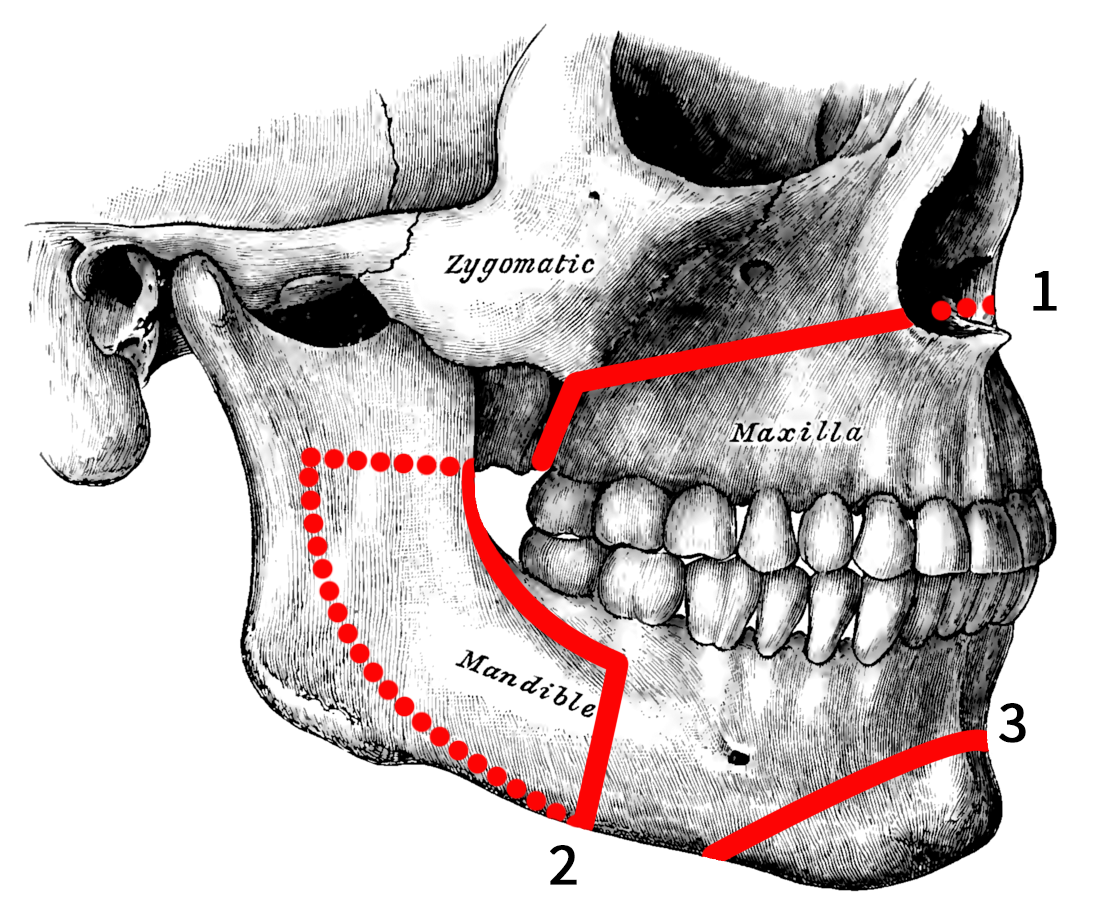The orthognathic surgery is one of the possible treatments that can solve the deformities and dentofacial asymmetries having a portion of the population in his face, problems in any of the elements that compose it: jaw, zygomatic jaw bone, nose, orbital regions, teeth and soft tissues. Beyond mere cosmetic dentistry, there are circumstances in which patients suffer from negative consequences for their health due to such deformations. Sometimes, these can be resolved by orthodontics, but other times it is necessary to resort to orthognathic, either in a complementary way, or as an alternative therapy.
For example, one of the main drawbacks is malocclusion. The patient has an incorrectly aligned bite that causes difficulties in chewing, swallowing or breathing and can also cause other ailments such as headache, temporomandibular joint pain or sleep apnea. Through orthognathic surgery they intervene in the different elements of the face, especially in the jaw to solve, among others, the following pathologies:
- Deformities on the lips or on the palate.
- Delayed or advanced jaw, which causes similar difficulties, and also swallowing.
- Mandibular asymmetry, which occurs if the jaw and chin are offset in relation to the vertical axis of the face.
- Open bite, which occurs when upper and lower teeth do not contact when closing the mouth, which causes irregularities in chewing.
- Upper jaw delayed or advanced with respect to the chin, which can cause joint or respiratory problems.
When carrying out the intervention, it is very important to pay attention to the details because the success of the treatment will depend to a large extent. For example, when the surgery is planned, it is necessary to anticipate how the tip of the nose, the position of the chin or the lips will be, since the aesthetic dimension and the expectation of the patient regarding their self-esteem end up being as relevant as the aspects purely functional. In that sense, the development of digital technology, both for the realization of the diagnosis and for the planning of the treatment and, even, the execution of the operation, have contributed to a new era in orthognathic surgery. We can assume more complex cases, predict the results to a greater extent and provide a more bearable experience for patients.
Therefore, the incorporation of resources such as the conical beam computerized tomography device (CBCT), the intraoral scanner and 3D software allows us to have an accurate knowledge of the imbalances and the most appropriate actions for each person. Likewise, technology serves to simulate the operation before it is carried out. Computer programs help us determine the most appropriate approach for each case and simulate the final result, which is a significant improvement in predictability.


